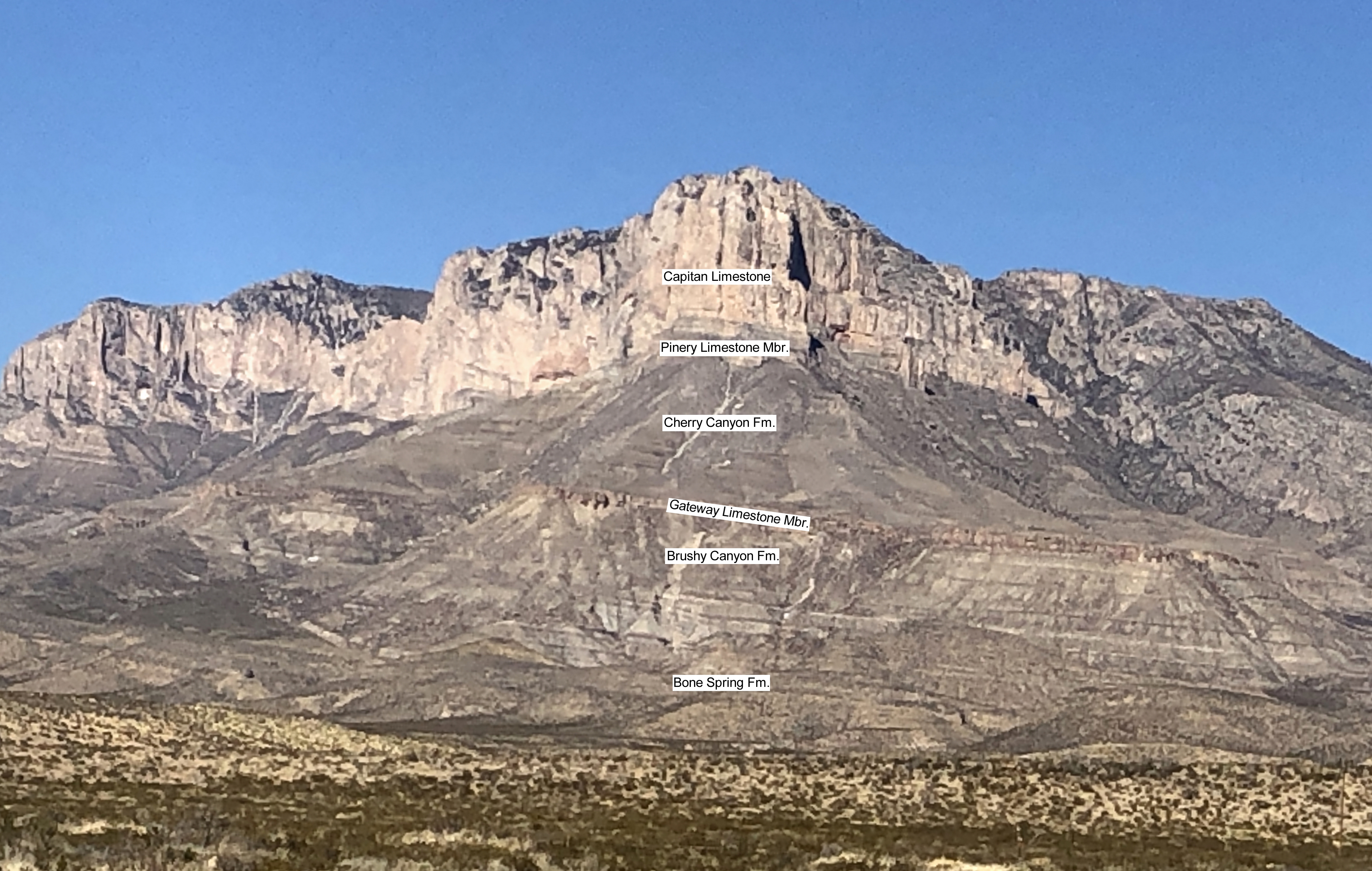Set a time machine to around 275 million years ago and the Guadalupe Mountains would look like another world. Instead of dusty towers of desert rock, you’d see an underwater reef bustling with alien-like animals.
The Guadalupe Mountains are a range of mountains located in West Texas and southeastern New Mexico, reaching 2,667 meters (8,751 feet) above sea level today. Today being the key word.
During the Permian period – a geological era that lasted from about 299 to 252 million years ago – this soaring desert landscape was anything but arid. Back then, it lay along the western edge of the supercontinent Pangea. This particular area, now known as the Permian Basin, was flooded by an inland sea connected to the gigantic surrounding ocean by a narrow channel.
This history comes to life most vividly in Texas’s Capitan Formation, widely regarded as one of the best-preserved Permian fossil reefs in the world. Here in the Chihuahuan Desert, a vast and steady slope leads up to El Capitan, arguably one of the most iconic peaks in the Guadalupe Mountains, standing 2,464 meters (8,085 feet) above sea level today.

The many geological layers of El Capitan in Texas shows its deep history.
The fossils in the formation show it was primarily built of sponges and algae, as opposed to the corals that form most modern reefs. The sprawling reef provided a home to a diversity of marine creatures, including ammonites, crinoids, snails, nautiloids, bivalves, brachiopods, and trilobites.
It didn’t stick around forever, evidently. Around 252 million years ago, the end of the Permian ushered in Earth’s most devastating extinction event, known as the “Great Dying.” In this cataclysmic upheaval, more than 95 percent of marine species and 70 percent of land species were wiped from existence. While the exact cause remains unclear, massive volcanic eruptions or a colossal asteroid impact are the leading suspects. Either way, something devastating caused catastrophic changes to the environment, creating conditions that put the majority of life on the planet into a stranglehold.

A satellite image of the border of Texas and New Mexico showing the Guadalupe Mountains and El Capitan.
Image credit: Landsat 9/USGS/NASA Earth Observatory image by Wanmei Liang
The Permian Basin wasn’t spared. After the wave of death and destruction, the once-thriving Capitan Reef was buried beneath thousands of feet of sediment, sealing it off for tens of millions of years. Over the next 20 million years, tectonic forces gradually pushed this ancient reef upward, lifting it nearly 3,000 meters (10,000 feet). As time passed, the overlying layers were eroded away by wind and rain, finally exposing the reef to the world once again.
All of this might seem very distant from the 21st century – but it isn’t as abstract and irrelevant as you might think.
The Permian Basin is now the largest petroleum-producing region in the US, and it owes this to the ancient marine life that once thrived here. For millions of years, the remains of microscopic algae, plankton, and other tiny organisms were buried beneath layers of sediment. Under immense heat and pressure, this organic matter was transformed into the vast oil reserves that power much of our modern world today. The energy these lifeforms “sucked up” from the Sun eons ago continues to fuel industries, homes, and your car, creating a powerful link between us and a distant past.
[H/T: NASA Earth Observatory]
Source Link: In Texas, An Arid Mountain Of Fossils Was Once A Bustling Reef Ecosystem